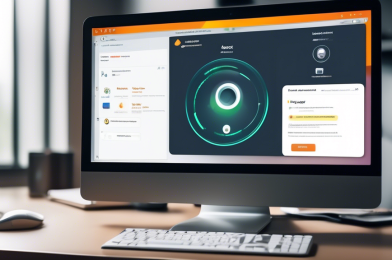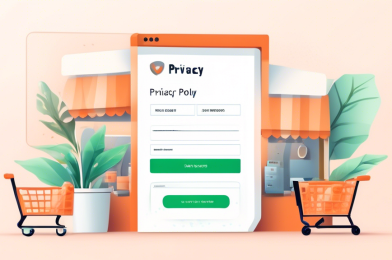Introduction to Avast Online Security & Privacy for Chrome
Overview of Avast Online Security & Privacy for Chrome
In the digital age where online security threats are constantly evolving, safeguarding personal information and ensuring safe browsing experiences are critical. Avast Online Security & Privacy for Chrome is an all-encompassing browser extension designed to protect users from an array of online dangers while enhancing their privacy. This comprehensive solution is tailored specifically for Chrome users, providing a robust shield against malware, phishing attempts, and other cyber threats.
Importance of Online Security and Privacy for Chrome Users
With millions of individuals relying on Google Chrome for everyday tasks—ranging from casual browsing to sensitive financial transactions—browser security and privacy have never been more important. The necessity to secure one’s digital footprint against cyber-attacks and unauthorized surveillance is paramount. Avast Online Security & Privacy for Chrome steps in as a crucial tool in this arena, delivering peace of mind through its advanced protection mechanisms.
Brief History and Background of Avast as a Cybersecurity Company
Avast has been a forefront player in the cybersecurity industry for decades, established in Prague, Czech Republic, in 1988. Renowned for its innovative solutions and widespread user trust, Avast has continuously strived to keep up with the rapidly changing threat landscape. Their commitment to safeguarding users globally is reflected through products like Avast Online Security & Privacy for Chrome, consistently pushing the boundaries of online security and privacy.
Introduction to Avast Online Security & Privacy for Chrome
Overview of Avast Online Security & Privacy for Chrome
In an era where digital security is paramount, the need for reliable security solutions is more pressing than ever. Enter Avast Online Security & Privacy for Chrome, a browser extension designed to safeguard your online activities. Avast, a well-known name in cybersecurity, offers a comprehensive tool that provides real-time protection against a myriad of online threats while enhancing your overall browsing experience.
Importance of Online Security and Privacy for Chrome Users
As Chrome continues to dominate the web browser market, so does the necessity for robust online security measures. With billions of users worldwide, Chrome has become a prime target for cybercriminals. From phishing attacks to malware infestations, the threats are numerous and constantly evolving. Therefore, equipping your browser with strong security features is crucial. Avast Online Security & Privacy for Chrome not only protects user data from cyber threats but also ensures a private browsing experience, blocking intrusive trackers and securing sensitive information.
Brief History and Background of Avast as a Cybersecurity Company
Avast, founded in Prague in 1988, has a storied history of providing top-notch cybersecurity solutions. With over 30 years of experience, Avast has grown from a small innovative company into a global leader in the cybersecurity industry. The company’s journey is marked by numerous accolades and milestones, reflecting its commitment to safeguarding users’ digital lives. Today, Avast serves over 435 million users worldwide, offering a range of security products that are trusted by both individuals and businesses. The company’s ongoing dedication to the realm of digital security is evident in products like the Avast Online Security & Privacy for Chrome, which epitomize their expertise and innovation in cybersecurity.
Avast’s mission is to create a world where digital freedom is a reality. Their relentless pursuit of this mission has led to the development of advanced technologies that not only protect users but also empower them to navigate the digital space with confidence. Avast’s extensive research and development initiatives ensure that their products are always at the forefront of the cybersecurity landscape, addressing the latest and most sophisticated threats.
In essence, the Avast Online Security & Privacy for Chrome extension is a product of years of expertise, innovation, and a deep understanding of the digital threat landscape. It embodies Avast’s commitment to user safety and privacy, offering a reliable solution for Chrome users to protect their online presence.
Key Features of Avast Online Security & Privacy for Chrome
Real-time Threat Detection and Protection
The cornerstone of Avast Online Security & Privacy for Chrome is its robust real-time threat detection and protection capabilities. This feature continually scans web pages and downloads, identifying and neutralizing threats such as malware, phishing sites, and other malicious entities before they can cause harm. Unlike traditional security systems that operate on periodic scans, real-time protection provides a proactive line of defense, safeguarding users against emerging threats continuously.
By leveraging advanced algorithms and threat intelligence gathered from a global network of sensors, Avast ensures that even the latest and most sophisticated threats are detected and blocked instantaneously. This proactive approach not only prevents malware infections but also significantly reduces the likelihood of phishing attacks, where cybercriminals attempt to steal personal information by masquerading as trustworthy entities. For users, this means peace of mind knowing that they can browse the web securely without constantly worrying about hidden dangers.
Privacy Enhancements
In today’s digital environment, maintaining online privacy is paramount. Avast Online Security & Privacy for Chrome addresses this need with an array of privacy-focused features designed to protect users’ personal information and online activities from prying eyes. One of the standout features is anti-tracking, which prevents websites and advertisers from tracking your online behavior and creating detailed profiles based on your browsing habits.
Another essential component is the secure browsing mode, which adds an extra layer of encryption and security protocols, ensuring that your data remains private even when using public Wi-Fi networks. By anonymizing your online presence and encrypting your data, Avast helps to mitigate the risks associated with identity theft and data breaches, thus preserving your privacy in the increasingly intrusive digital landscape.
These privacy enhancements are particularly crucial in an age where data is often referred to as the ‘new oil,’ underscoring the need for tools that help protect individuals from pervasive surveillance and data exploitation. Users can enjoy a freer, more secure internet experience, knowing that their personal information is not being harvested or misused.
User-Friendly Interface and Easy Installation
One of the significant advantages of Avast Online Security & Privacy for Chrome is its user-friendly interface, which simplifies both installation and everyday use. To get started, users need to follow these straightforward steps:
- Visit the Chrome Web Store and search for Avast Online Security & Privacy.
- Click on the extension to open its details page.
- Select Add to Chrome, then confirm the installation by clicking Add Extension.
- Once installed, the Avast icon will appear in your Chrome toolbar, indicating that the extension is active.
- Click the Avast icon to open the interface, where you’ll find options to customize your security and privacy settings according to your needs.
This process is designed to be quick and hassle-free, allowing even those with minimal technical expertise to enhance their online security and privacy effortlessly.
The interface itself is intuitive, featuring clear, easy-to-navigate menus and settings that make it simple to understand and manage your protections. Whether you are adjusting your threat detection preferences, enabling privacy modes, or reviewing security alerts, the user experience is tailored to ensure that all functionalities are accessible and straightforward.
Overall, the combination of real-time threat detection, comprehensive privacy features, and an easy-to-use interface makes Avast Online Security & Privacy for Chrome an essential tool for anyone looking to enhance their online safety. By integrating these key features into a seamless experience, Avast not only helps users protect their digital lives but also promotes a safer, more secure internet for everyone.
Advantages of Using Avast Online Security & Privacy for Chrome
Comprehensive Security Coverage
One of the most compelling advantages of using Avast Online Security & Privacy for Chrome is its comprehensive security coverage. Avast’s extensive range of protective measures ensures that users are safeguarded against diverse online threats. This includes malware, phishing attacks, malicious websites, and intrusive ads. By scanning websites in real-time and analyzing the URL for any potential threats, Avast helps to mitigate risks even before they materialize.
Moreover, Avast excels when compared to other similar security tools available for Chrome. While many alternatives offer basic protection, Avast goes a step further by integrating advanced algorithms and a vast database of known threats to provide a more robust defense mechanism. This comprehensive security ensures that users can browse the internet with confidence, knowing that Avast is consistently working in the background to keep their online activities secure.
Enhancing Browsing Experience
Aside from security, Avast Online Security & Privacy for Chrome significantly enhances the overall browsing experience. The powerful combination of security and privacy features ensures a smoother and safer online journey. For instance, anti-tracking technology prevents advertisers and third parties from tracking your online activities, leading to faster load times and a less cluttered browsing environment. Additionally, blocking intrusive ads not only improves page loading speed but also mitigates the risk of encountering malicious advertisements.
Several real-life testimonials and case studies highlight the tangible benefits users experience when using Avast. Many users report feeling more secure and enjoying a more streamlined browser experience. For example, John D., a long-time user, states, Since I installed Avast Online Security & Privacy for Chrome, my browser has been faster and less prone to interruptions from ads. I feel much safer online, and my privacy is better protected.
Such positive feedback underscores the value of Avast in transforming daily browsing into a more secure and enjoyable activity, free from the usual annoyances and dangers associated with the internet.
Regular Updates and Support
Another significant advantage of using Avast Online Security & Privacy for Chrome is the commitment to regular updates and continuous support. In the rapidly-evolving digital landscape, new threats emerge daily, making it crucial to have a security tool that remains current with the latest threats. Avast ensures that the browser extension is frequently updated to tackle emerging vulnerabilities, thereby offering users state-of-the-art protection at all times.
The importance of these continuous updates cannot be overstated. By maintaining an up-to-date security tool, users are better equipped to handle new malware strains, phishing techniques, and other cyber threats that appear. This proactive approach to security helps in safeguarding sensitive information and maintaining the integrity of users’ online activities.
In addition to software updates, Avast provides a wealth of customer support and resources. From detailed FAQs and user guides to a responsive customer support team, Avast ensures that users receive the help they need, when they need it. This comprehensive support system not only aids in effective troubleshooting but also enhances user confidence in their security solution.
In conclusion, the advantages of using Avast Online Security & Privacy for Chrome are manifold. The combination of comprehensive security coverage, an enhanced browsing experience, and regular updates and support makes Avast an indispensable tool for anyone looking to secure their online presence. Whether you are an individual user or a business, Avast’s robust and user-friendly solution provides the necessary tools to navigate the internet safely and confidently.
Conclusion
In an age where threats to online security and personal privacy are ever-evolving, the importance of robust cybersecurity measures cannot be overstated. Avast Online Security & Privacy for Chrome stands out as a comprehensive and user-friendly solution, offering real-time threat detection and advanced privacy enhancements tailored for the Chrome browser. The proactive protection against malware and phishing sites, coupled with anti-tracking and secure browsing modes, ensures that users can navigate the digital world with confidence and peace of mind.
Avast’s long-standing reputation in the cybersecurity industry, combined with its commitment to continuous updates and exceptional customer support, makes it a reliable choice for Chrome users seeking to fortify their online defenses. The easy installation process and intuitive interface further enhance the user experience, making top-tier online security accessible to everyone, from tech novices to seasoned web surfers.
Overall, Avast Online Security & Privacy for Chrome is more than just a browser extension—it’s a comprehensive toolkit designed to protect users’ online activities and personal information. By choosing Avast, users invest in a safer, smoother, and more private browsing experience. Whether you’re concerned about malicious websites or simply want to keep your online habits secure, Avast Online Security & Privacy for Chrome is a worthy addition to your digital arsenal.
For those who value their online security and privacy, embracing tools like Avast Online Security & Privacy for Chrome is a crucial step towards safer internet usage. Stay protected, stay private, and empower your browsing with Avast.









